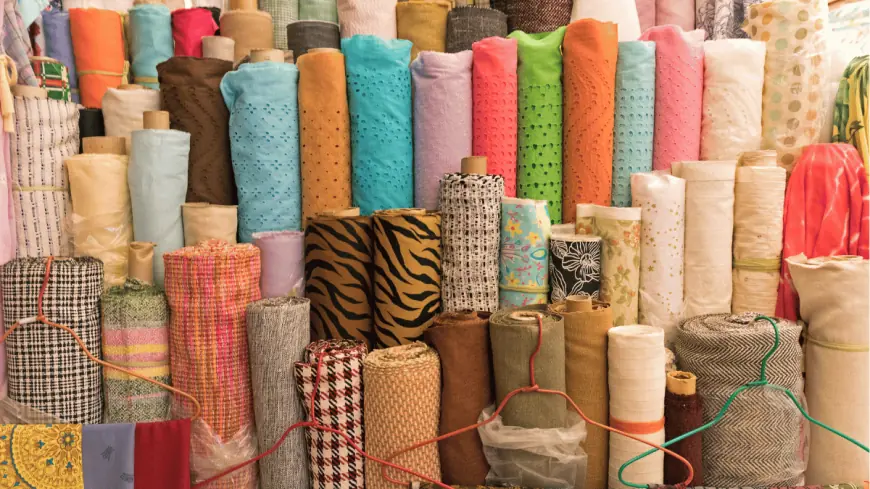Brazil’s Textile Market: Culture, Cotton, and Competitiveness
Brazil’s textile industry is characterized by a well-established domestic supply chain that covers natural fibers, synthetic fibers, spinning, weaving, knitting, dyeing, finishing, and garment manufacturing.

Brazil Textile Market Outlook
- The Brazil textile market is one of the most dynamic industries in Latin America, with deep cultural, economic, and social significance.
- The country is among the world’s leading producers of cotton and has a long history of textile and apparel manufacturing.
- From fiber production to fashion exports, Brazil’s textile sector spans across the entire value chain, making it a critical contributor to employment, trade, and domestic consumption.
Brazil’s textile industry is characterized by a well-established domestic supply chain that covers natural fibers, synthetic fibers, spinning, weaving, knitting, dyeing, finishing, and garment manufacturing. Unlike many markets that rely heavily on imports, Brazil maintains a relatively integrated textile ecosystem, supported by abundant cotton production and a large internal consumer base.
The market also benefits from a strong cultural influence on fashion and design. Brazil’s vibrant traditions, colors, and patterns often reflect in its textile and apparel production, helping it stand out in global fashion circles.
Key Drivers of the Market
1. Cotton Production
Brazil is among the largest cotton producers globally, ensuring a stable supply of raw material for domestic textile manufacturers. This natural advantage reduces dependence on imports and boosts the competitiveness of Brazilian fabrics in both domestic and international markets.
2. Rising Domestic Consumption
A large and youthful population drives demand for clothing and home textiles. Urbanization, increasing disposable income, and evolving fashion preferences are fueling the growth of apparel and lifestyle segments.
3. Fashion and Cultural Influence
Brazil is globally recognized for its fashion weeks, swimwear industry, and unique designs inspired by cultural diversity. This creativity strengthens the country’s textile and apparel positioning in international markets.
4. Sustainability Initiatives
The growing emphasis on sustainable practices is reshaping the textile sector. Many Brazilian companies are adopting eco-friendly dyes, organic cotton, and circular economy practices to align with global sustainability trends.
5. Government Support and Trade Policies
Supportive government measures, investment incentives, and trade agreements with Latin American neighbors provide opportunities for market expansion. The domestic industry also benefits from policies encouraging local manufacturing and innovation.
Challenges
-
High Production Costs: Despite abundant raw material availability, higher labor and operational costs sometimes affect competitiveness compared to Asian markets.
-
Global Competition: Imports from countries with cheaper manufacturing costs challenge local producers, especially in mass-market apparel.
-
Technological Gaps: While the industry is evolving, some segments lag in automation and digitalization, impacting efficiency.
-
Environmental Concerns: Water consumption, chemical usage, and waste management remain pressing issues, pushing the industry toward sustainable reforms.
Opportunities
-
Smart Textiles & Innovation: Increasing adoption of digital textile printing, wearable technology, and smart fabrics offers opportunities for diversification.
-
Export Growth: Expansion into North American and European markets with high-quality, sustainable products can boost Brazil’s textile exports.
-
E-commerce Expansion: The rise of online retail is reshaping consumer buying behavior, providing growth prospects for apparel and fashion retailers.
-
Technical Textiles: Demand for textiles in automotive, healthcare, and industrial applications is opening new growth avenues.
The Brazil textile market is expected to continue evolving, supported by innovation, sustainability initiatives, and rising domestic consumption. While challenges such as high production costs and global competition persist, the country’s strong raw material base, vibrant fashion culture, and growing export potential will play crucial roles in shaping its future. Companies that adapt to sustainability trends, digital transformation, and consumer preferences are likely to capture the most significant opportunities.
What's Your Reaction?
 Like
0
Like
0
 Dislike
0
Dislike
0
 Love
0
Love
0
 Funny
0
Funny
0
 Angry
0
Angry
0
 Sad
0
Sad
0
 Wow
0
Wow
0

















































